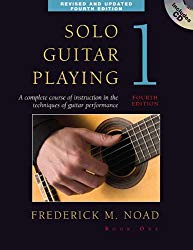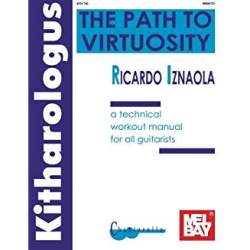Guitar Finger Names
You might be thinking: I know very well the names of my fingers, thank you very much. And you would be quite right! Except that in guitar playing we give our fingers very specific names . This is particularly important in classical guitar where classical guitar scores use these names to suggest to players which fingers to use at certain points.
I’m getting a lot of messages from people coming here because they want to learn to play guitar as part of worship. If this is you, you might want to join Aaron Anastasi’s programme. Aaron is a musician and a worship leader. He put together a step by step programme for aspiring Christian musicians. If you're interested, you can use the exercises and advice in learn-classical-guitar-today to develop your finger strength and dexterity and Aaron's lessons to work on strumming and worship music.
CLICK HERE TO LEARN WORSHIP GUITAR !!
Guitar finger names for the left hand
Guitar finger names of the fingers in the left hand are named according to numbers.1=Index Fingers
2=Middle Fingers
3=Ring Finger
4=Little Finger
The thumb in the left hand does not have a number as we don’t use it for fretting notes.
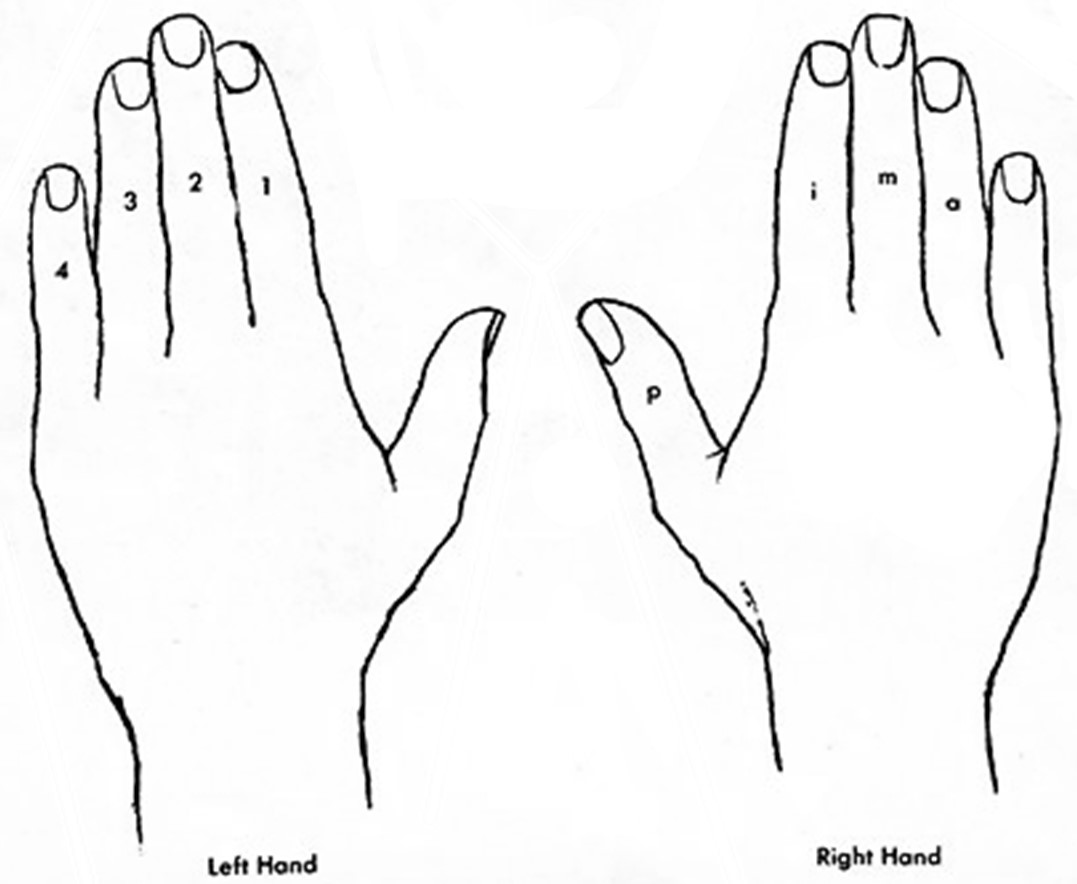
The picture above comes from Frederick Noad's Solo guitar Playing - Book 1 which is probably the most useful book that any beginner classical guitarist can work through. It builds you up step by step with beautiful and level appropriate pieces and lovely teacher student duets that keep it interesting.
I’m getting a lot of messages from people coming here because they want to learn to play guitar as part of worship. If this is you, you might want to join Aaron Anastasi’s programme. Aaron is a musician and a worship leader. He put together a step by step programme for aspiring Christian musicians. If you're interested, you can use the exercises and advice in learn-classical-guitar-today to develop your finger strength and dexterity and Aaron's lessons to work on strumming and worship music.
CLICK HERE TO LEARN WORSHIP GUITAR !!
| I've included the Amazon link as the picture on the left so you can click and have a look. Amazon also has a kindle version but I wouldn't recommend it as the layout really isn't so great in the kindle version. |
The Frederick Noad's Solo guitar Playing - Book 1 includes works by Teleman, Tarrega, Sor, Dowland and Bach and has favourites such as Lagrima, Romance and Adelita in its concert repertoire.
There is a more expensive edition with a CD, but really YouTube makes that redundant as you can find all the pieces on YouTube.
Guitar finger names for the right hand
The fingers in the right hand are named in classical guitar playing according to the Spanish words for them.
p=pulgar or thumb
i= indico or index finger
m=medio or middle finger
a= anular or ring finger
Ricardo Iznaola thought it so important that he included some exercises to strengthen the pinky in his well known book: Kitharologus: The Path to Virtuosity. Doniso Aguado also strongly advocated strengthening the pinky so that the whole hand can be evenly strengthened. Dioniso Aguado thought it so important that he specifically wrote studies that specifically aimed to strengthen the pinky (or c-finger)
| The Path to Virtuosity is seen as one of the most important books that a guitarist can work through. If you don't do it now, you will definitely do it later. So, save yourself a few years of trial and error and start doing these workouts daily. |
The link that I’ve attached is to a kindle copy that is very readable and works pretty much as well as (if not better) the ring bound original.
If you don't want to pay for it (let's face it, that more than $15 can be a bit steep), you can get it for free by clicking on the link to SCRIBD below and signing up for a free months membership. You can find it by searching for The Path To Virtuosity. To be honest, I don't know why anybody would pay for it as the SCRIBD version is excellent and you can ring bind which is the format in which the original sells.
Below is an excerpt from Tarrega’s Capricho Arabe. You will see that the fingering for the left hand is marked on the score. The fingering for the left hand is only marked in places where the fingering is not ‘obvious’, i.e. where the fingering doesn’t follow the usual rules of 1 in the first fret when in the first position and 2 in the second fret and on. The fingering for the right hand is not provided for the same reason, as it follows the normal rules for the right hand. The rules for the right and left hand are provided and practiced in the Beginner Classical Guitar Lessons.
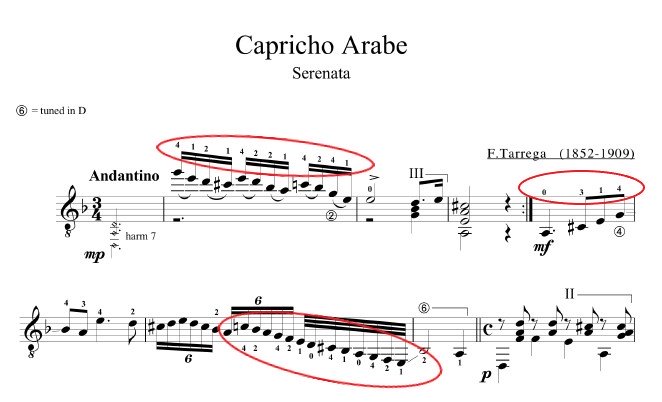
There are many cases where not all of the notes have been fingered because the pattern of fingering is repeated. In such cases you can generally assume that if a similar pattern exists that you will continue to use the fingering as provided in the previous few bars.
You can see this is the excerpt from Carcassi's Study in A minor (Opus 60 No. 7). The fingering for the first bar has been marked on the first four notes. The ordering of the fingering: p-a-m-i is the standard tremolo fingering which needs to be used for these first four notes. As the rest of the bar repeats the same pattern, the same tremolo fingering is to be used for the rest of the bar. The same can be seen in the second bar. The fingering for the first four notes is indicated as being p-i-a-i. This fingering is then repeated for the next four notes and is then changed for the last eight notes of the bar.

Return to Guitar Basics
You can scroll the rest of the guitar basics pages by scanning the list below, or scrolling through the navigation bar
- Sitting Positions: This lesson takes you through the principles and dos and don'ts of the classical guitar sitting position. It introduces you to the guitar supports available including footstools, the Efel, the Dynarette, the A-Frame and the ErgoPlayay.
- Music Theory provides an introduction to musical notation and to the basic theory that you will need to start playing.
- Notes on the Guitar: Becoming familiar with the notes on the guitar is essential for any guitarist. This lesson provides guidelines and free guitar software. This is where you pick up the guitar and begin playing.
- Finger Names : Finger names in classical guitar scores.
- How to Tune your Guitar: How to tune your guitar. There is nothing worse than playing on an untuned guitar. This page teaches you how to tune your guitar with and without an electronic tuner.
- Buying a Classical Guitar: If you need to buy a guitar or are thinking about buying a new guitar, then this page is for you. It provides useful tips on how to pick your first classical guitar.
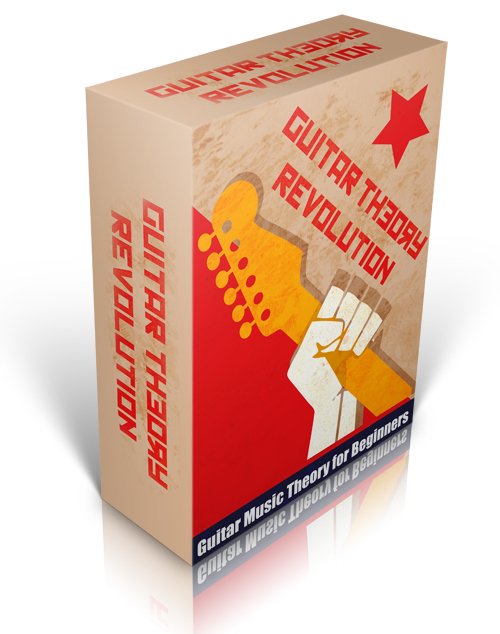
You'll need to go a little deeper into music theory as you proceed. The best online resource for this is Guitar Theory Revolution. It recognises that music theory is very hard for guitarists because music theory has till now been located in the piano paradigm. The Guitar Theory Revolution overthrows the piano paradigm that is holding you back and embraces the attributes of the guitar to unpack music theory. In fact, it goes further and allows you to see that the guitar is one of the best instruments for learning theory.
